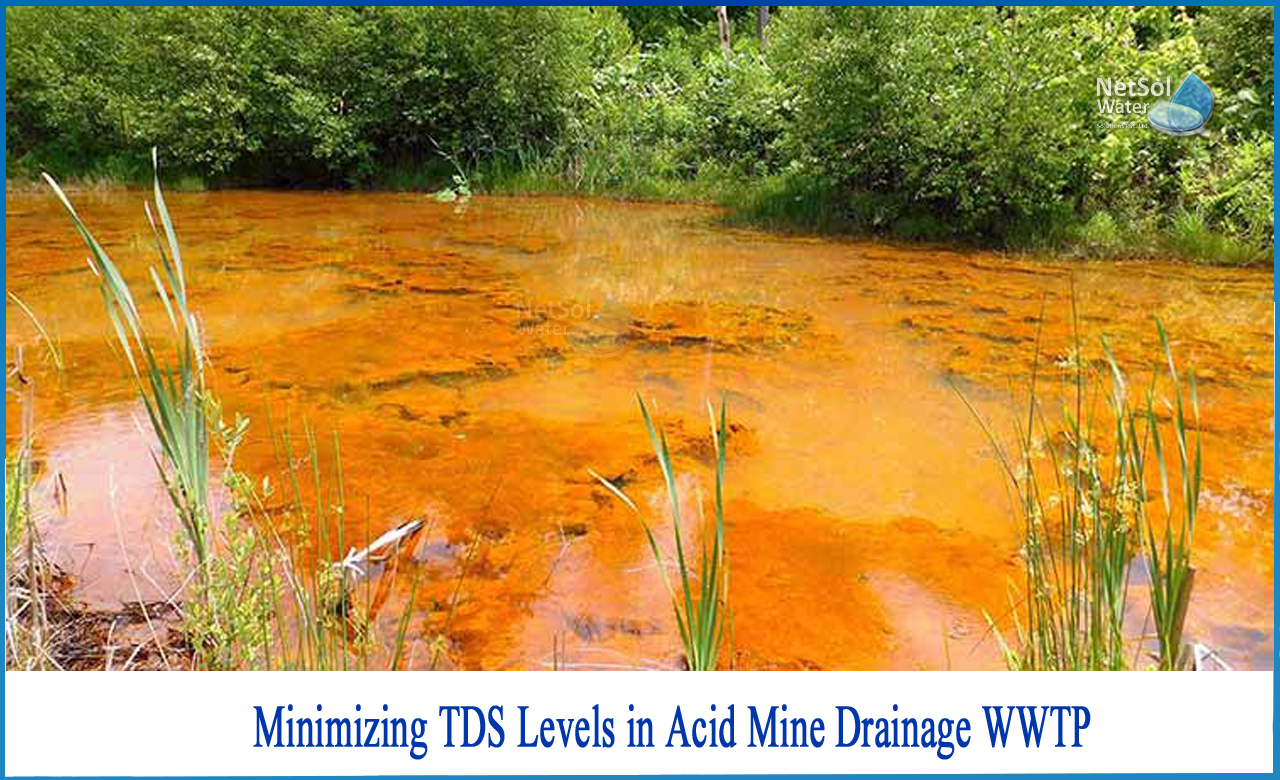How to remove TDS in acid mine drainage WWTP?
Acid mine/rock drainage occurs naturally in some environments as a result of the weathering of rocks, but it is further worsened by mining, which typically happens in rocks with a high concentration of sulphide minerals. Sulfuric acid is formed when water comes into contact with sulphur. Sulfuric acid dissolves and leaches the metals in the ore, resulting in high quantities of dissolved metals like iron, arsenic, and cadmium. Water oxidises when it is exposed to oxygen. When this happens, the water loses all of its oxygen, making it inhospitable for aquatic life. Furthermore, the rust and heavy metals in the water render it useless for all species that relies on it for survival.
How it can be treated?
Acid mine drainage (AMD) is a highly acidic effluent from mining sites that is high in sulphate and heavy metals.
Traditional AMD treatment options include a variety of physicochemical approaches that employ a lot of chemicals and money. Biological treatment has emerged as a viable, cost-effective, and environmentally friendly option for AMD treatment. The majority of these treatments include the employment of microorganisms such as bacteria and fungi in a passive remediation procedure. By aiding the reduction of metals, sulphates, and creating alkalinity, bioreactors and wetlands with microbial attachments contribute in the prevention of AMD. Biotechnological approaches could be useful in creating techniques for effectively treating waste like AMD without compromising the environment's long-term viability.
TDS removal
Coagulant dosage and pH are two essential criteria that are taken into account while determining the best conditions for the composite coagulant's performance in the coagulation process.
Natural processes can cause drainage to transition from acidic to neutral. Acid mine drainage with a pH of 5-7 is also known as low TDS (total dissolved solids) acid mine drainage. Dissolved iron levels in neutral mine drainage are normally in the 100-400 ppm range.
Before the water may be discharged, the iron must be removed. If the iron is dissolved, it must be converted to a precipitated state before it can be removed. To ensure that the iron is precipitated and oxidised from the ferrous to the ferric state, the pH is elevated to 7 or higher. Ferric iron is a rusty orange metal that is difficult to dissolve.
Conclusion
Although active treatments are successful, they come with a significant expense in terms of installation and adsorbent. Furthermore, some active treatments, including as reverse osmosis, ion exchange, and electrodialysis, necessitate pre-treatment of the influent, but are effective in treating wastewater from AMD.
On the other hand, waste material can also reduce environmental load and can be implemented as an economically viable treatment option.Afterconsidering and examining several studies, it has been determined that fly ash and its derivatives, such as modified fly ash and fly ash synthesised zeolites and slag, are the best waste materials for the treatment of highly acidic AMD. They have a greater ability to raise the pH of an extremely acidic solution while also removing contaminants.
Netsol Water is Greater Noida-based leading water & wastewater treatment plant manufacturer. We are industry's most demanding company based on client review and work quality. We are known as best commercial RO plant manufacturers, industrial RO plant manufacturer, sewage treatment plant manufacturer, Water Softener Plant Manufacturers and effluent treatment plant manufacturers. Apart from this 24x7 customer support is our USP. Call on +91-9650608473, or write us at enquiry@netsolwater.com for any support, inquiry or product-purchase related query.



